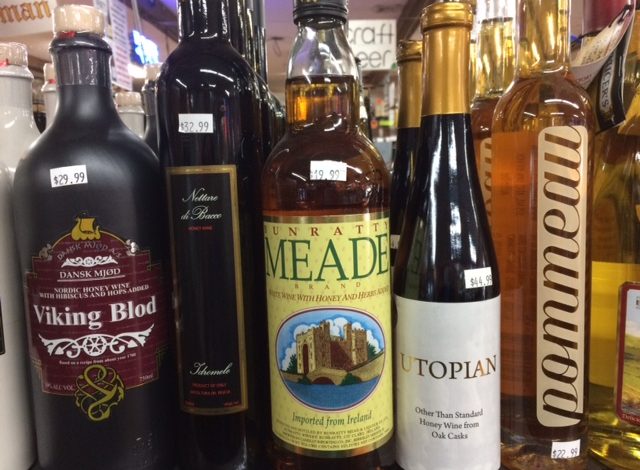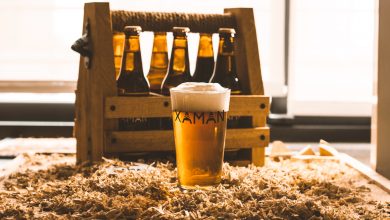Unique Beer Styles Essential For Your Tasting List

For the most genuine beer enthusiasts out there, they will travel far and wide to seek out the most acclaimed microbrews where tastes are only available in small portions or for a limited amount of time. With the trend of microbreweries now strong into a new decade without signs of slowing, the United States alone is replete with beer tasting options. Taking methods from history and reviving them to new forms is nothing new. There is a long list of ancient beverage styles that could occupy years in exploring.
Like the more than 7,000 breweries in the United States, new brew styles and imitations of past ones keep coming up. You could spend a lifetime trying to get to them all without scratching the surface. Chances are too many more would form, and you’d fall behind again. Trying to make your way through them all is more likely a path to a quick grave. Attempting to sample the different styles is probably the safest path with plenty to enjoy. With the history of brewing going back nearly 10,000 years, there has been plenty of time for different kinds of brewing to come in and out of style. Where many breweries make their name crafting their own version of present day’s favorite styles, there are plenty of others that remain hard to find. Finding the best of the best on this list of beers is a more colorful task. Checking these off of your list could take the fanatic as far as any country-wide brewery tour and will do so with the added thrill of the hunt.
Braggot
With the growing popularity in fermented beverages, Mead has gained its own small following. It is debated to be one of the oldest known drinks made through fermentation that man has created. Created through a fermentation process with honey, Mead has developed a culture of creation around it just as Kombucha and Beer have. Still, Mead has not found a commercial following in the same way that microbreweries have exploded, or even in the way that Kombucha has developed its fanatics.
Braggot, on the other hand, is a blend of Mead and Beer that is being produced in no shortage of breweries in the United States. Braggots could be one of the more interesting styles of beer to explore, as there is a healthy variety of Braggot styles that have no limit to the way they could expand. The creation of Braggot is in no need of an even balance between the honey and beer distribution, therefore leaving Brewers with a lot of room for creativity. Still hard to find, plenty of challenge remains in this search.
This could especially be a favored style for beer drinkers who are not a fan of the hoppiness of IPAs that dominate the market. Braggot tends to lean away from hops, and they are only really used to offset the sweetness of the honey. For the light drinker that cannot hold too much alcohol, be warned, Braggots tend to be on the high end of alcohol content, so take your time exploring and drink responsibly.
The other bright side of Braggots is that they are practical for homebrewers to experiment with. While you may not want to make it your first homebrewing effort, it is not something you need to gain an expert level mastery before diving into. Just make sure you have reliable instructions. In line with the reality of Braggots’ lack of hops, it is recommended that you avoid the use of aggressively aromatic or flavorful hops in your Braggot blends. This is not to say that you cannot be experimental with Braggots, but it might be wise to find one of the many Braggot ingredient lists online that have a good track record. Once you’ve capably created a consumable Braggot, you can begin getting a little more experimental.
Steinbier

This is a unique and ancient brewing style that is going to be harder to find and is far less likely that you will be adding to your own list of homebrewing. Steinbier, or ‘Stone Beer,’ was created through the lack of appropriate metal brewing equipment that existed in the areas it was being created. It is said that farmers who could not access such brewing equipment instead used wooden vessels to hold their mash. To boil the wort in these situations, hot stones were dropped into the containers.
This process calls for a particular kind of stone that can withstand levels of heat up to 212 degrees Fahrenheit. The best stones for this purpose are Igneous rocks such as Granite. The curious nature of the heating process with Steinbier mean that breweries with their own version of Steinbier are not as numerous as they are with Braggot, but that doesn’t mean they cannot be found. One of the most well-known versions of Steinbier is from Brauerei Leikeim of Germany.
Some recipes can be found online for homebrewed Steinbier for those interested in the challenge of making this rare brew. The most essential part is to ensure that you are using stones that are capable of being superheated and rapidly cooled. Otherwise, your experiment will be compromised. The reaction of the stone with sugars of the wort tends to give this beer hints of caramel. There is also a smoky character to the flavor profile.
Lambic
Belgian Lambics aren’t the hardest beers in the world to find, but it is the process that they go through that makes them unique. Even saying lambic doesn’t exactly get to the core of what you are drinking. There are Faro and Gueuze, which are also considered lambics, straight lambics, and fruit-based lambics. These beers are defined by their production process in the Senne River Valley of Belgium. The beers are spontaneously fermented by wild airborne yeasts that are native to the area. The nature of spontaneous fermentation makes the process interesting enough where the fermentation is completely up to the chance of whatever yeasts happen to come into contact with the brew. This style of fermentation essentially puts the final product up in the air, giving brewers nothing to do but cross their fingers.

This is the only style of beer that remains in production still using spontaneous fermentation. Still, there are plenty of American breweries mimicking the process that originated in the Senne River Valley to create their own versions of the beer. Belgian Brewers will argue that those beers made with spontaneous fermentation outside of Belgium cannot be considered lambics since they do not have the same seasonal wild yeasts that are signature to their lambics. Others argue the microbiota essential to this brewing style exists in the equipment of the breweries rather than their seasonal air.
Lambics are one of the more traditionally known sour beers. Besides their spontaneous fermentation, lambics are also differentiated from most beers for their extensive fermentation process. The enzymes are left to do their work over years, making this style of beer a particularly trying process for homebrewers to undertake. Even more challenging is creating a blended lambic such as a Gueuze, which is a blend of a younger and older lambic. In this case, multiple lambics must go through a brewing process and come through the years, both successfully. This exponentially increases the laundry list of potential mistakes that could be made in the process.
In fruit lambics, such as the framboise (raspberries) or kriek (cherries), the fruit is added anywhere from one to two years after the brewing. From there, the beer will sit with this fruit anywhere from three months up to more than a year. While raspberries and cherries are the two most popular fruits to be used with fruit lambics, you might also find apricot, blackberry, plum, or strawberry lambics. The range that lambics can provide merely through the length of time being processed and the yeasts that have the chance to come into contact with them through spontaneous fermentation makes this style of beer a pleasure to explore. As with many forms, a person could devote themselves only to exploring lambics and still have a lifetime of discoveries to be made.
Plenty More Strange and Rare Brews to Find
Surely, there is some limit to the range of strange brews that can be found today, but this list doesn’t get us close to it. We have not even mentioned Gose, Grodziskie, or Sathi, all favorites of beer drinkers on the hunt for something more eccentric. Considering the variety the world of fermenting can offer, it is hard to imagine a limit to the possibilities people will be willing to try. It is only a matter of time before a new technique is created or an old one is reinvigorated.
These unique styles open a bountiful realm to those looking to taste, homebrew, or both. There is a great deal to discover away from the traditional and well-practiced world of brewing. As long as a drinker or brewer is prepared to wear the title of brew-snob or brew-nerd (and maybe even wear it with pride), there will be no struggle in finding new styles to quench the palette.



